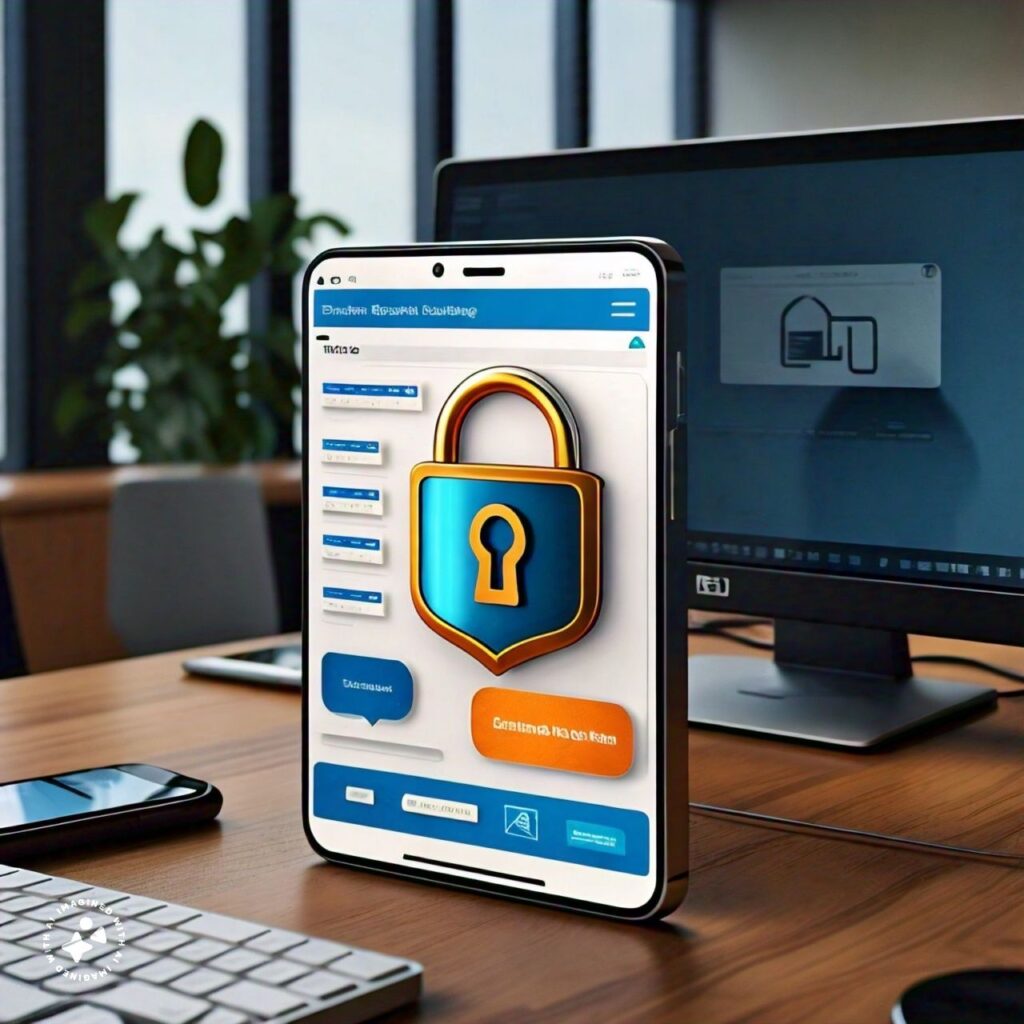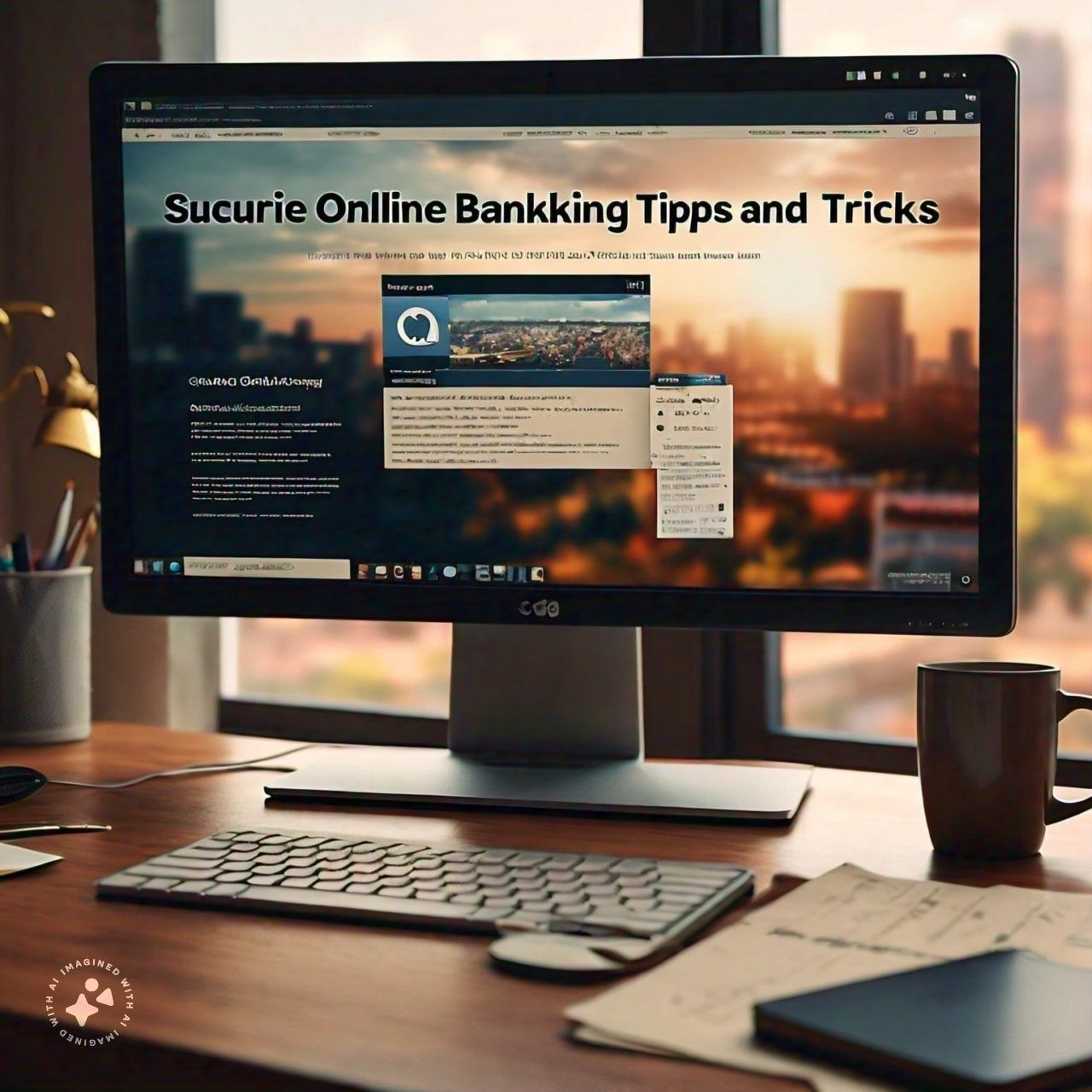In today’s fast-paced digital world, online banking has become an indispensable part of our lives. With the convenience it offers, from transferring funds to paying bills, managing finances has never been easier. However, this convenience comes with its own set of risks. Cyber threats loom large, and it’s crucial to stay vigilant and adopt secure practices to safeguard your financial transactions. This comprehensive guide will delve into essential tips and tricks to ensure your online banking experience remains secure and hassle-free.

Understanding the Risks
Before we delve into the tips and tricks for secure online banking, it’s essential to understand the potential risks lurking in the digital realm. Cybercriminals are constantly devising new ways to exploit vulnerabilities and gain unauthorized access to sensitive financial information. From phishing scams to malware attacks, the threats are diverse and ever-evolving.
Tip 1: Choose a Reputable Bank
Regarding online banking, the first step towards ensuring security is selecting a reputable bank or financial institution. Opt for well-established banks with a proven track record of prioritizing customer security. Research their security measures, encryption protocols, and authentication methods to gauge their commitment to safeguarding your financial data.
Tip 2: Strengthen Passwords and Authentication

A strong password is your first line of defense against unauthorized access. Avoid using easily guessable passwords and opt for complex combinations of letters, numbers, and special characters. Additionally, enable multi-factor authentication (MFA) wherever possible to add an extra layer of security. MFA requires users to provide two or more forms of identification before accessing their accounts, significantly reducing the risk of unauthorized access.
Tip 3: Keep Software Updated
Regularly updating your devices and banking apps is essential for protecting against security vulnerabilities. Software updates often contain patches for known vulnerabilities, making it harder for cybercriminals to exploit weaknesses in your system. Enable automatic updates whenever possible to ensure your devices are always equipped with the latest security enhancements.

Tip 4: Beware of Phishing Attempts
Phishing remains one of the most prevalent cyber threats targeting online banking users. Cybercriminals impersonate legitimate institutions through deceptive emails, messages, or websites to trick users into divulging sensitive information such as login credentials or financial details. Be wary of unsolicited emails or messages requesting personal information and never click on suspicious links. Always verify the authenticity of communication by directly contacting your bank through official channels.

Tip 5: Use Secure Networks
Avoid conducting online banking transactions over unsecured or public Wi-Fi networks, as they pose significant security risks. Hackers can intercept data transmitted over these networks, potentially compromising your sensitive information. Instead, opt for secure, password-protected networks, such as your home Wi-Fi or cellular data connection, when accessing online banking services.

Tip 6: Monitor Account Activity Regularly
Vigilance is key to detecting and mitigating fraudulent activity on time. Make it a habit to monitor your account activity regularly, keeping an eye out for any unauthorized transactions or suspicious behavior. Most banks offer real-time alerts and notifications for unusual account activity, allowing you to take immediate action if any irregularities are detected.

Tip 7: Secure Your Devices
Ensure that the devices you use for online banking are adequately secured against potential threats. Install reputable antivirus software and firewall protection to prevent malware infections and unauthorized access. Furthermore, consider using dedicated devices or secure browsers exclusively for online banking to minimize the risk of exposure to malicious entities.
Conclusion
Secure online banking is paramount in safeguarding your financial well-being in today’s digital landscape. By following the tips and tricks outlined in this guide, you can fortify your defenses against cyber threats and enjoy a safe and seamless banking experience. Remember to stay informed about emerging threats and adapt your security measures accordingly to stay one step ahead of cybercriminals. With the right precautions and vigilance, you can navigate the online banking realm with confidence and peace of mind.

How do I enable two-factor authentication?
Enabling two-factor authentication (2FA) adds an extra layer of security to your online accounts by requiring not only a password but also a second form of verification to access your account. Here’s a general guide on how to enable 2FA for your online banking account:
- Log in to Your Account: Start by logging in to your online banking account using your username and password.
- Locate Security Settings: Look for the security or settings section within your account dashboard. This might be labeled differently depending on your bank’s website or app interface.
- Find Two-Factor Authentication Options: Within the security settings, you should see options related to authentication or security measures. Look for settings specifically related to two-factor authentication or multi-factor authentication.
- Choose Your Method: Banks typically offer several methods for two-factor authentication. Common methods include receiving a one-time code via SMS text message, using an authenticator app (such as Google Authenticator or Authy), or receiving a verification code via email.
- Enter Your Phone Number or Email: If you choose SMS text message or email as your 2FA method, you’ll need to enter your phone number or email address where you want to receive the verification codes.
- Verify Your Identity: Depending on the method you choose, you may need to verify your identity by entering a code sent to your phone number or email address.
- Set Up Authenticator App (Optional): If you opt for an authenticator app, you’ll need to download and install the app on your smartphone. Once installed, you’ll typically need to scan a QR code provided by your bank to link your account to the app.
- Enter Verification Code: After setting up 2FA, you’ll be prompted to enter a verification code each time you log in to your online banking account. This code will either be sent to your phone via SMS, email, or generated by the authenticator app.
- Confirm Settings: Once you’ve set up two-factor authentication, confirm your settings and make sure they are saved. You may also have the option to adjust additional security settings or preferences.
- Test the Setup: Before logging out, it’s a good idea to test the two-factor authentication setup to ensure everything is working correctly. Log out of your account and attempt to log back in to verify that you received the verification code and can successfully access your account.
By enabling two-factor authentication, you add an extra layer of protection to your online banking account, making it significantly more secure against unauthorized access.

thanks for sharing
welcome
really enjoyed
Good post
هنا النص مع استخدام السبينتاكس:
“هرم الروابط الخلفية
بعد التحديثات العديدة لمحرك البحث G، تحتاج إلى تنفيذ خيارات ترتيب مختلفة.
هناك شكل لجذب انتباه محركات البحث إلى موقعك على الويب باستخدام الروابط الخلفية.
الروابط الخلفية ليست فقط أداة فعالة للترويج، ولكن لديها أيضًا حركة مرور عضوية، والمبيعات المباشرة من هذه الموارد على الأرجح قد لا تكون كذلك، ولكن التحولات ستكون، وهي حركة المرور التي نحصل عليها أيضًا.
ما سنحصل عليه في النهاية في النهاية في الإخراج:
نعرض الموقع لمحركات البحث من خلال الروابط الخلفية.
2- نحصل على تحويلات عضوية إلى الموقع، وهي أيضًا إشارة لمحركات البحث أن المورد يستخدمه الناس.
https://www.fiverr.com/s/A9dWXY
كيف نظهر لمحركات البحث أن الموقع سائل:
1 يتم عمل وصلة خلفي للصفحة الرئيسية حيث المعلومات الرئيسية
نقوم بعمل صلات خلفية من خلال عمليات توجيه المواقع الموثوقة
الأهم من ذلك أننا نضع الموقع على أداة منفصلة من أساليب تحليل المواقع، ويدخل الموقع في ذاكرة التخزين المؤقت لهذه المحللات، ثم الروابط المستلمة التي نضعها كتوجيه على المدونات والمنتديات والتعليقات.
هذا التدبير المهم يبين لمحركات البحث خريطة الموقع، حيث تعرض أدوات تحليل المواقع جميع المعلومات عن المواقع مع جميع الكلمات الرئيسية والعناوين وهو أمر جيد جداً
جميع المعلومات عن خدماتنا على الموقع!